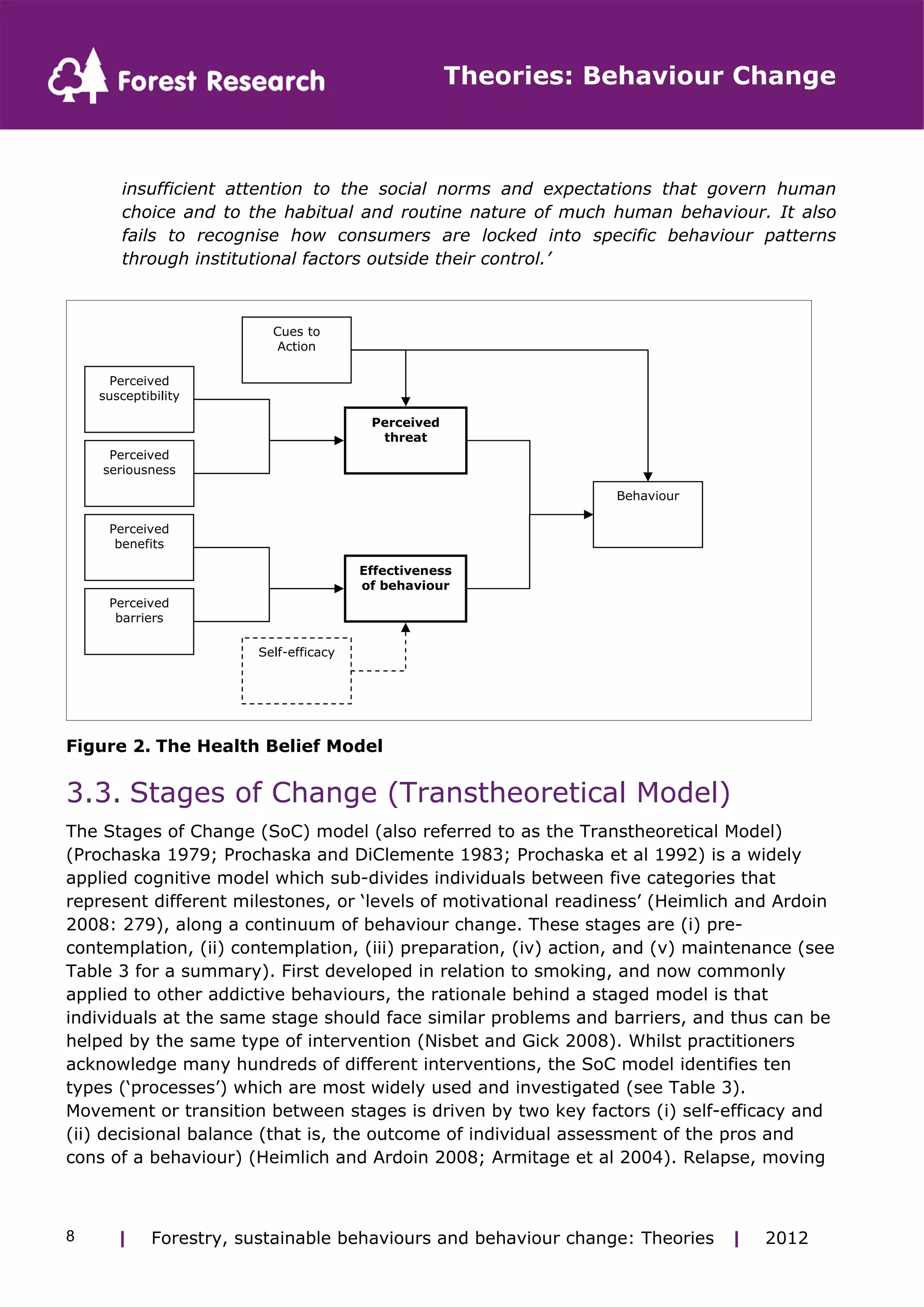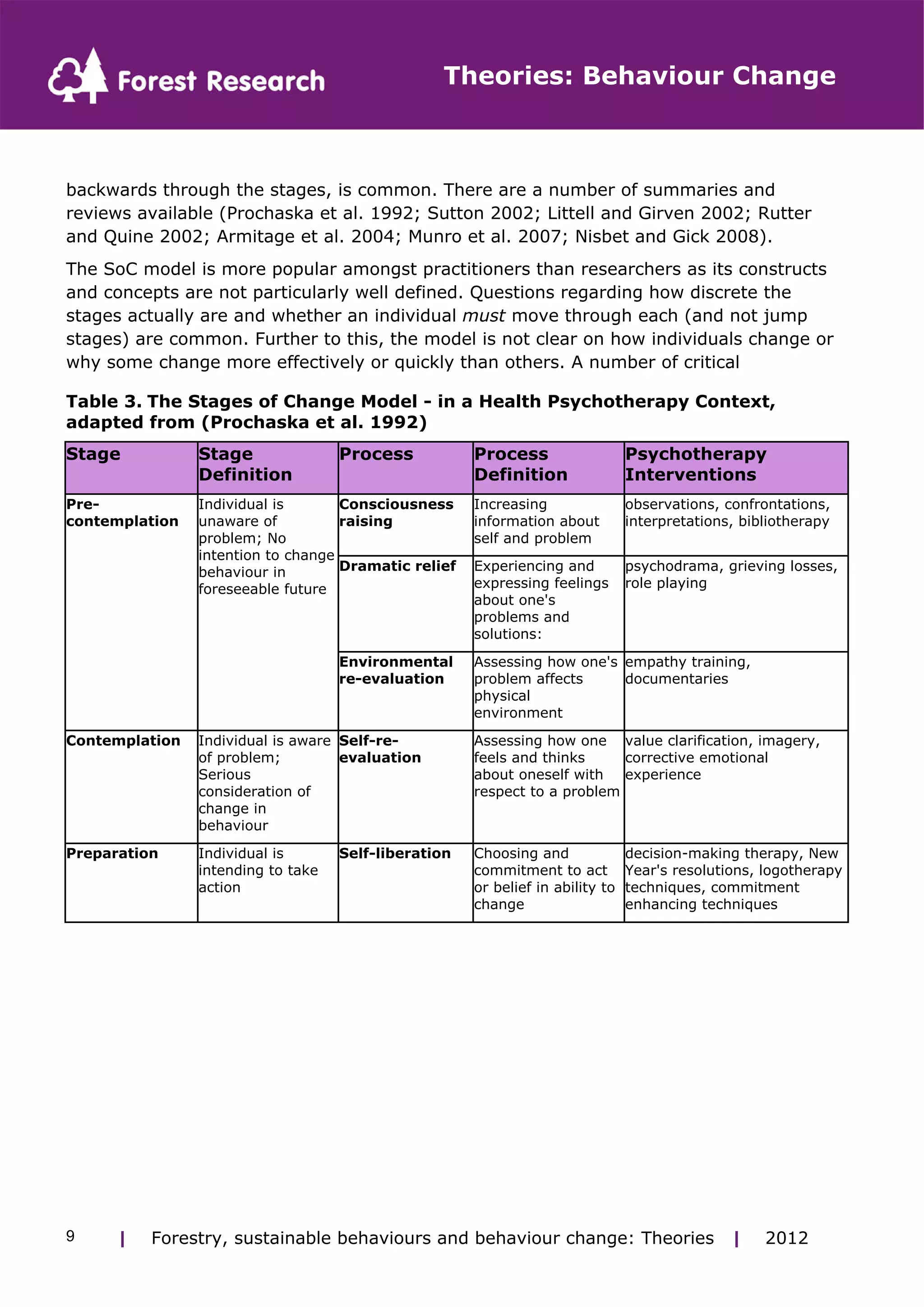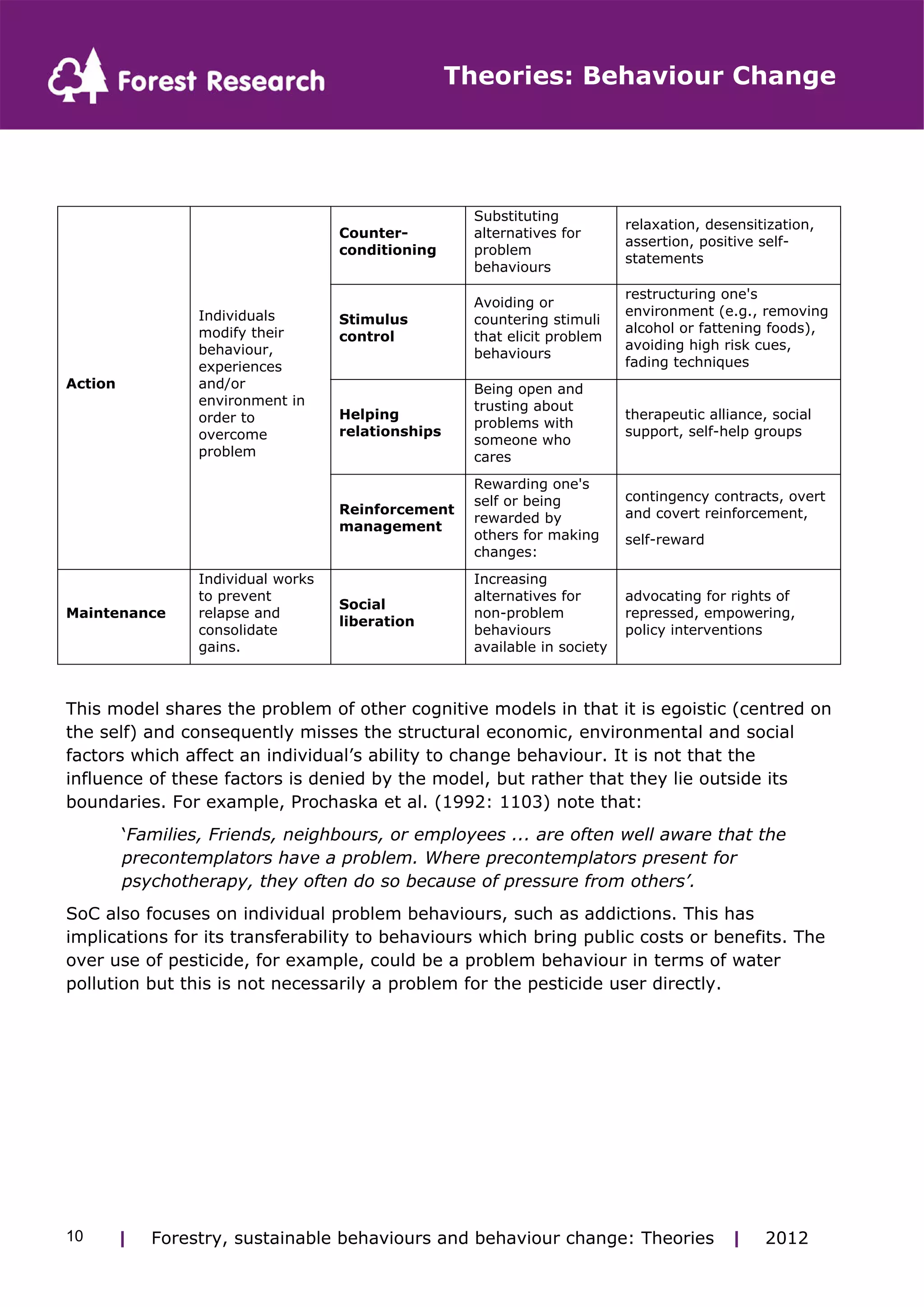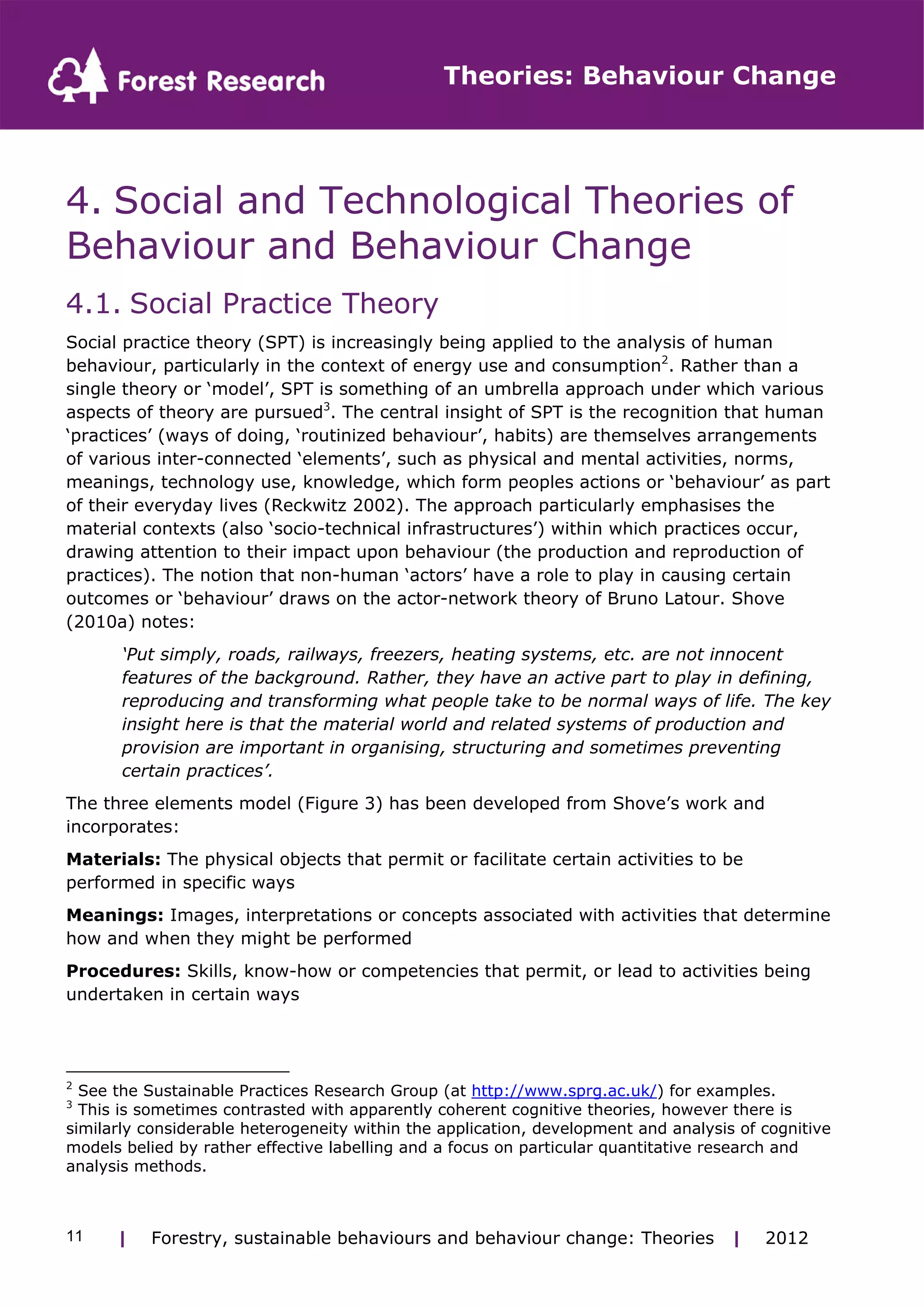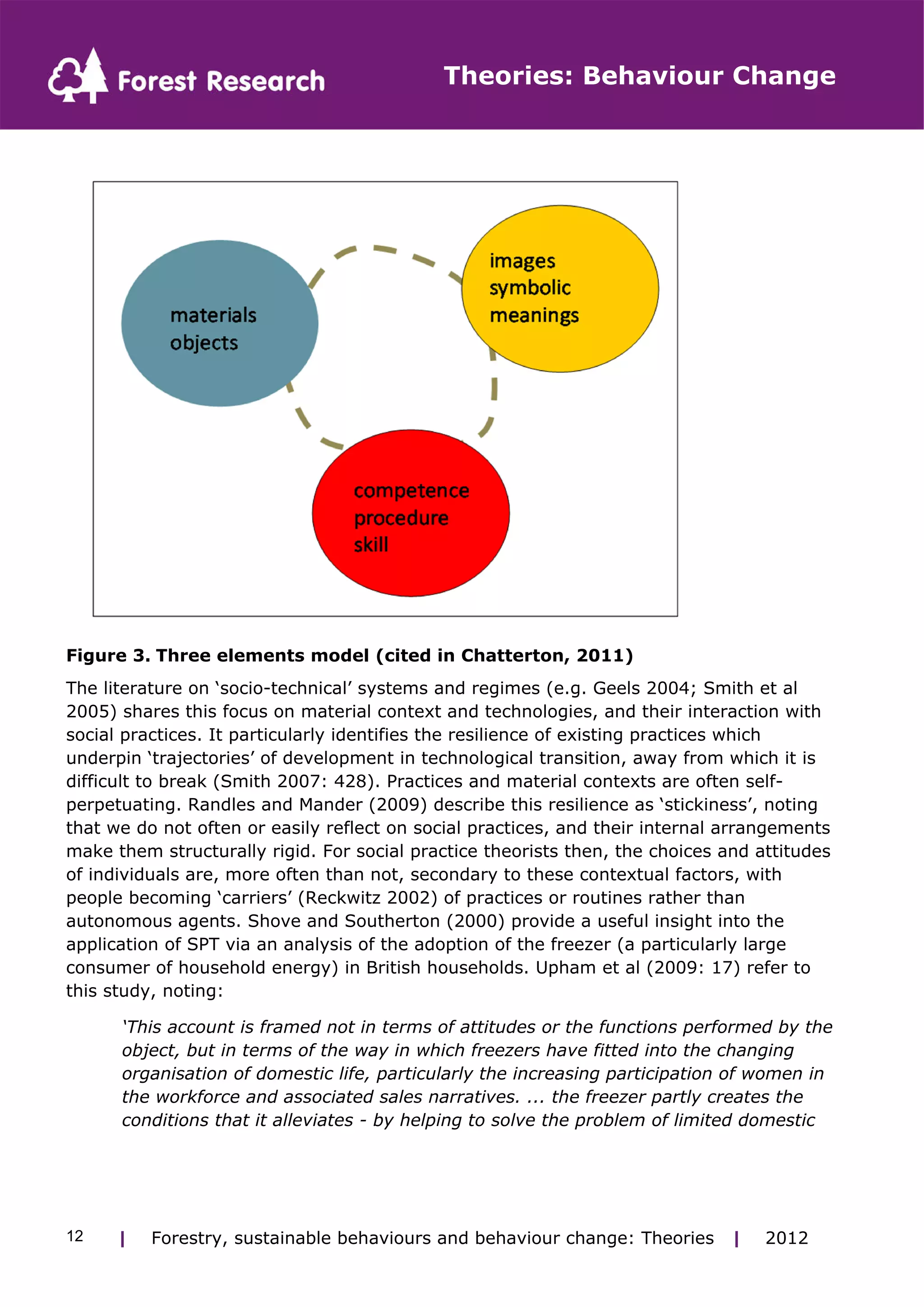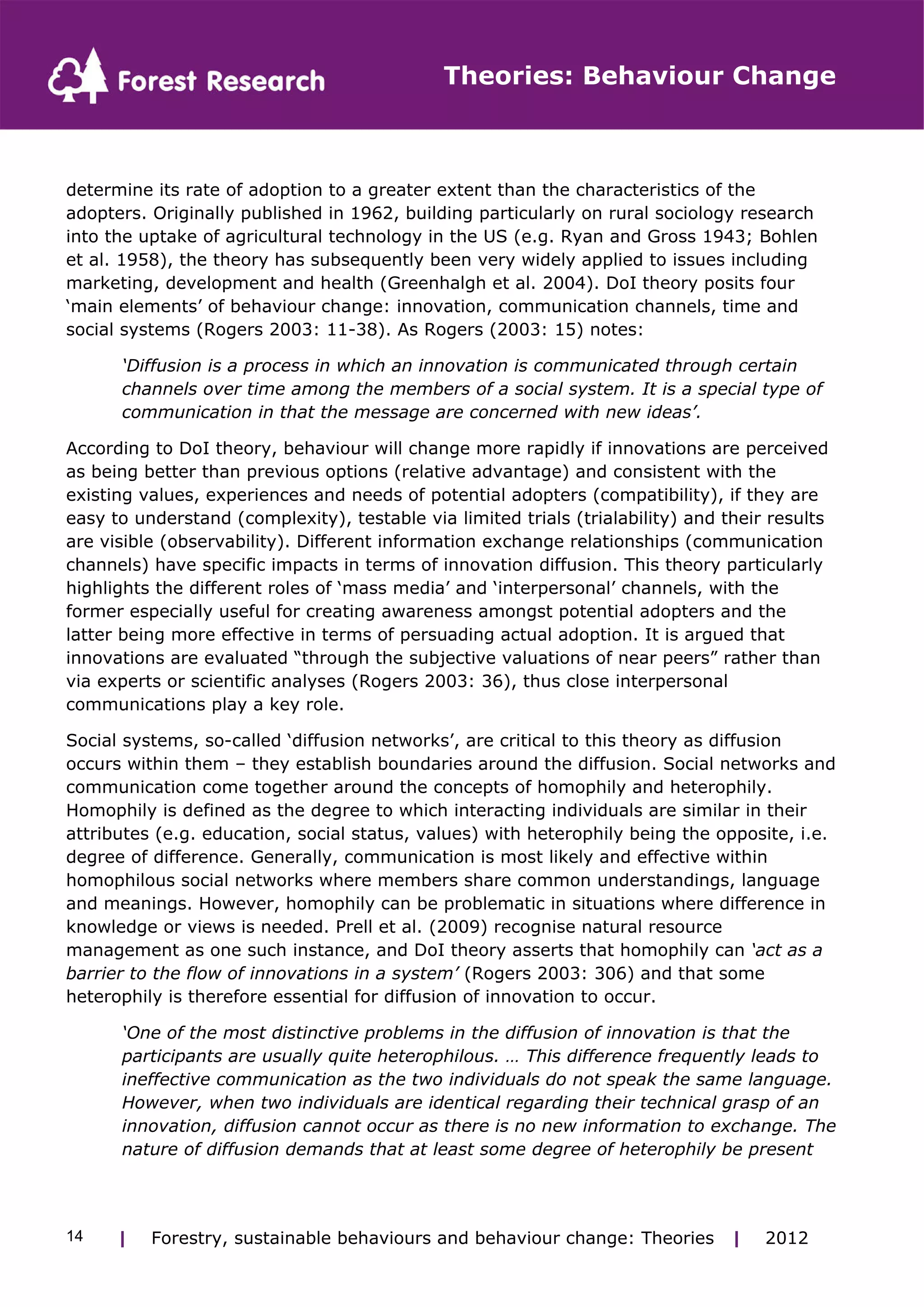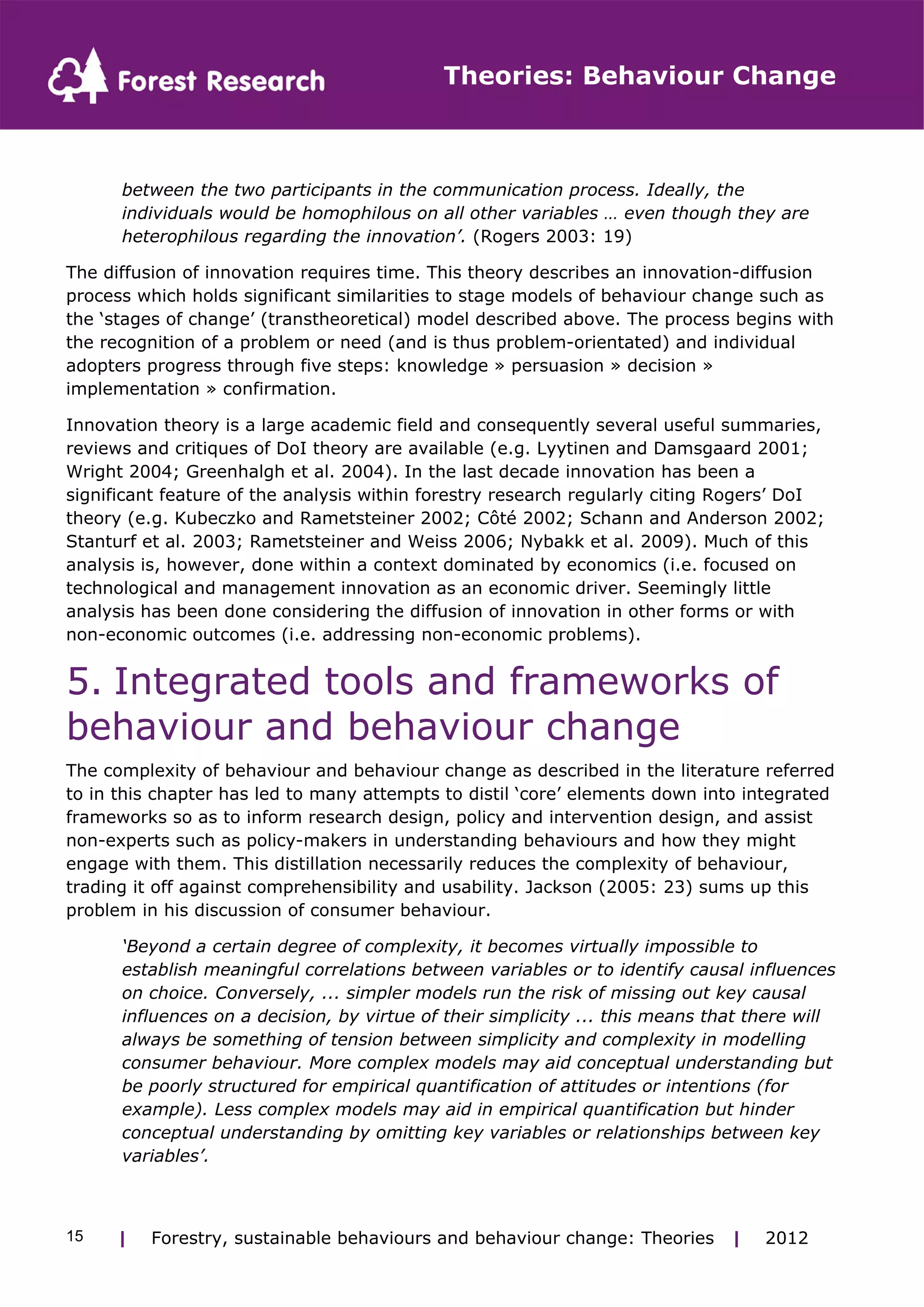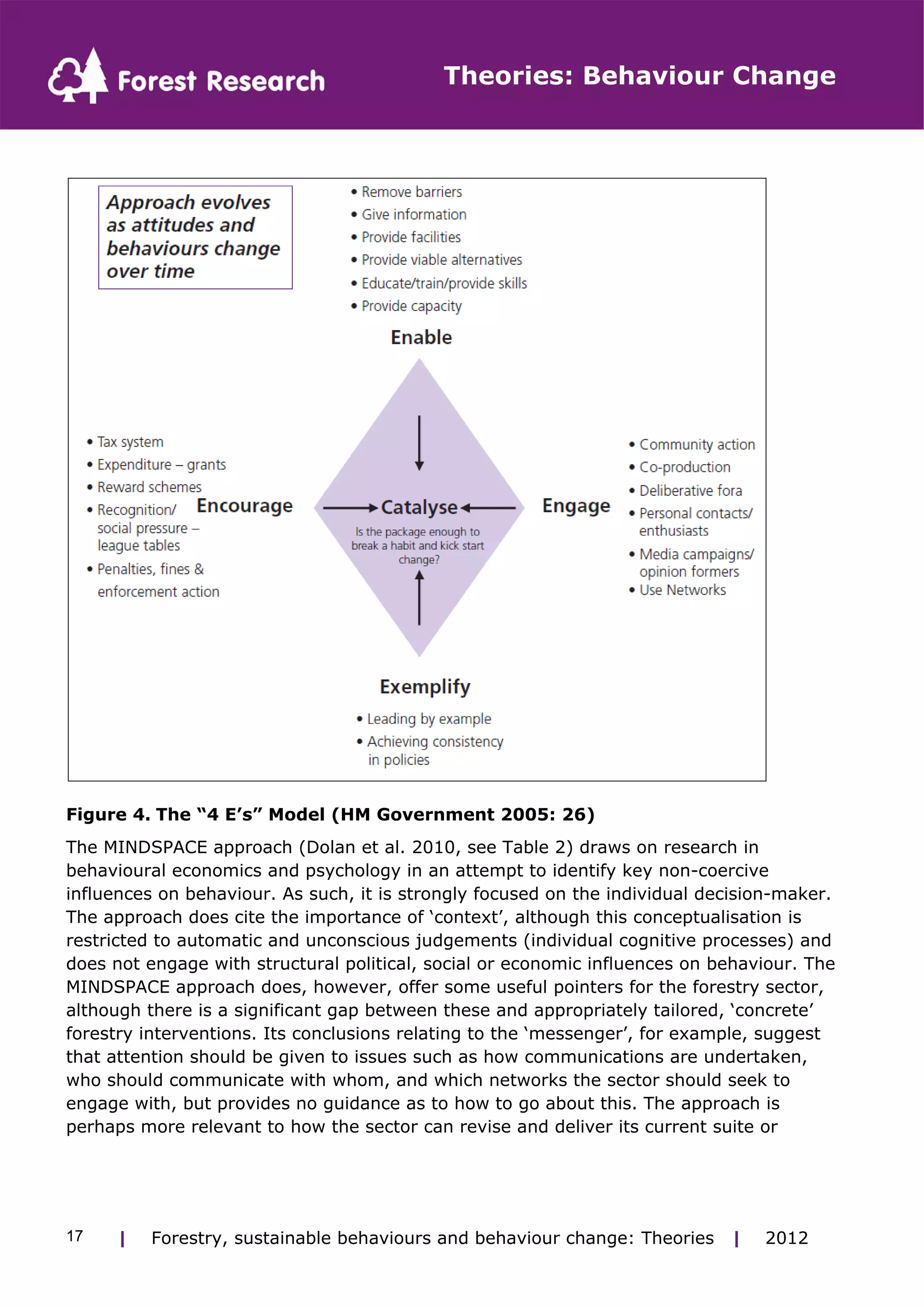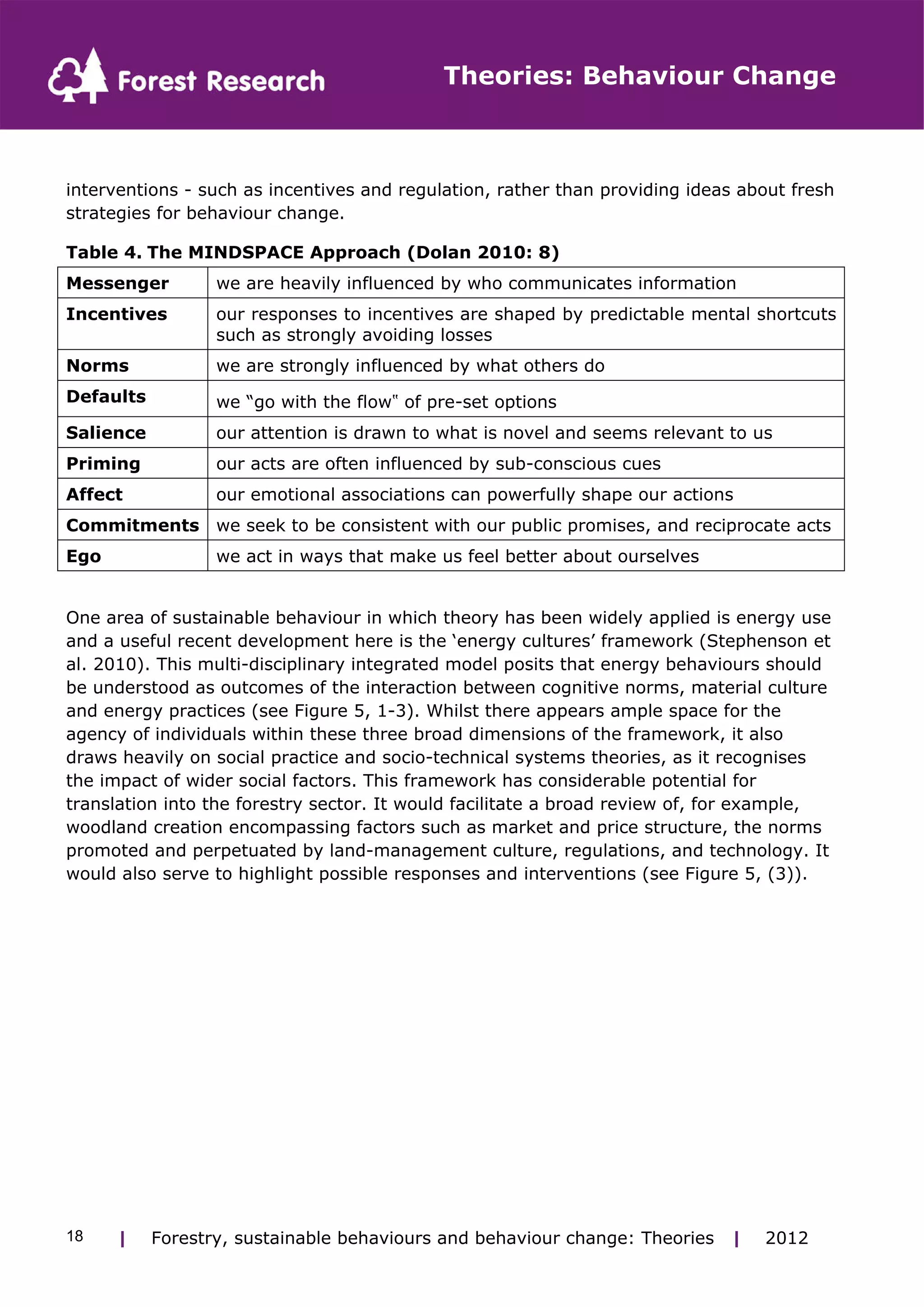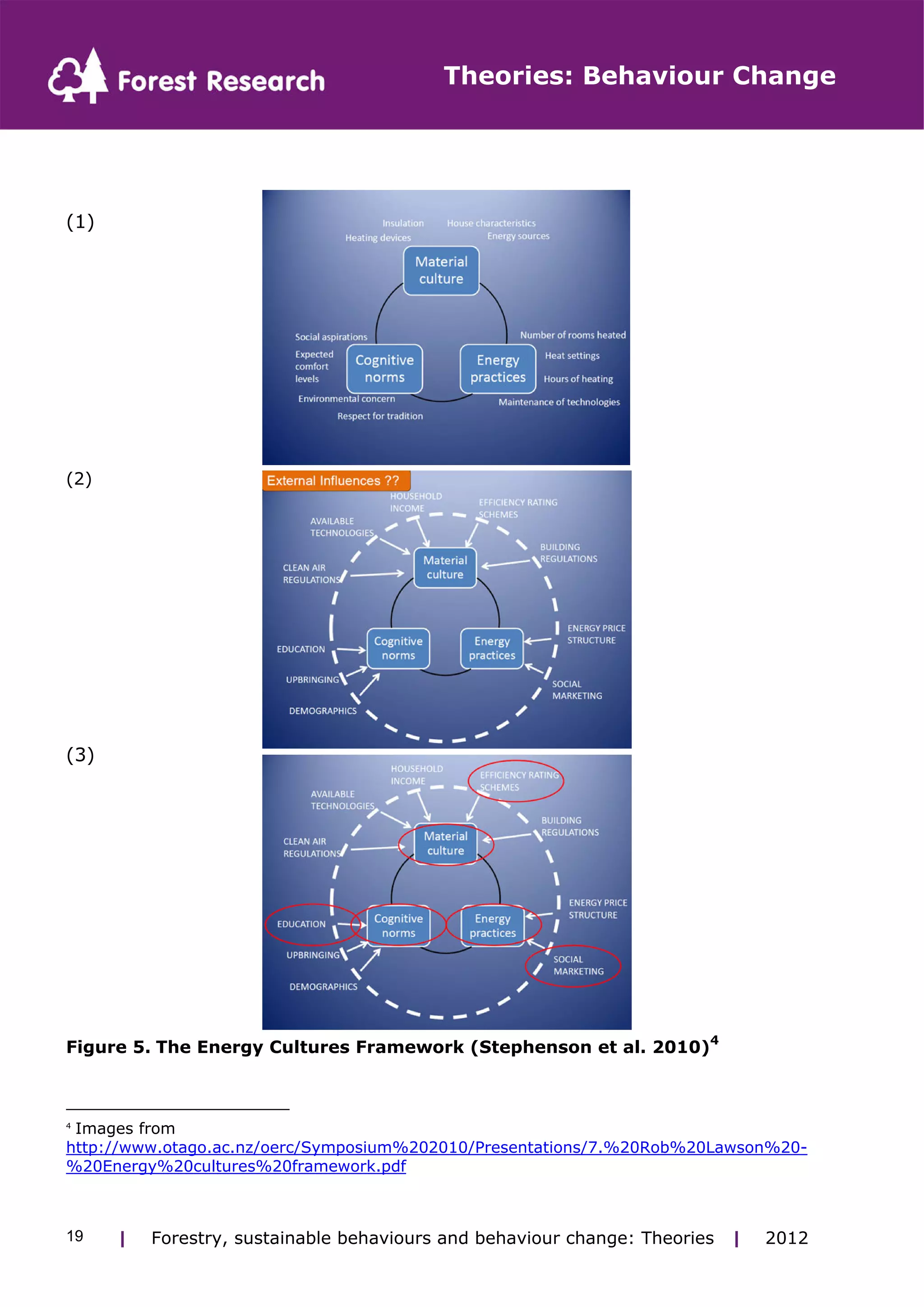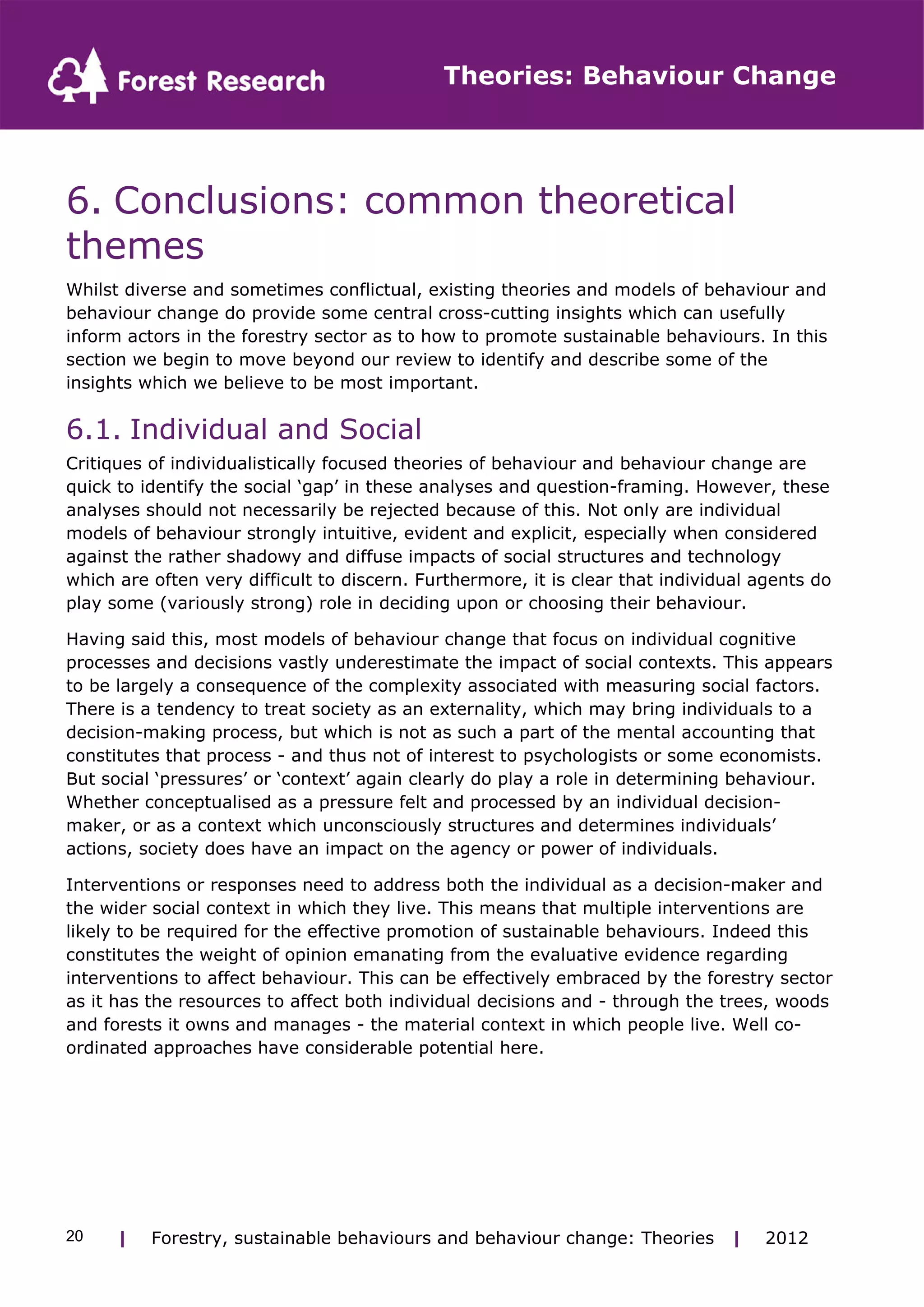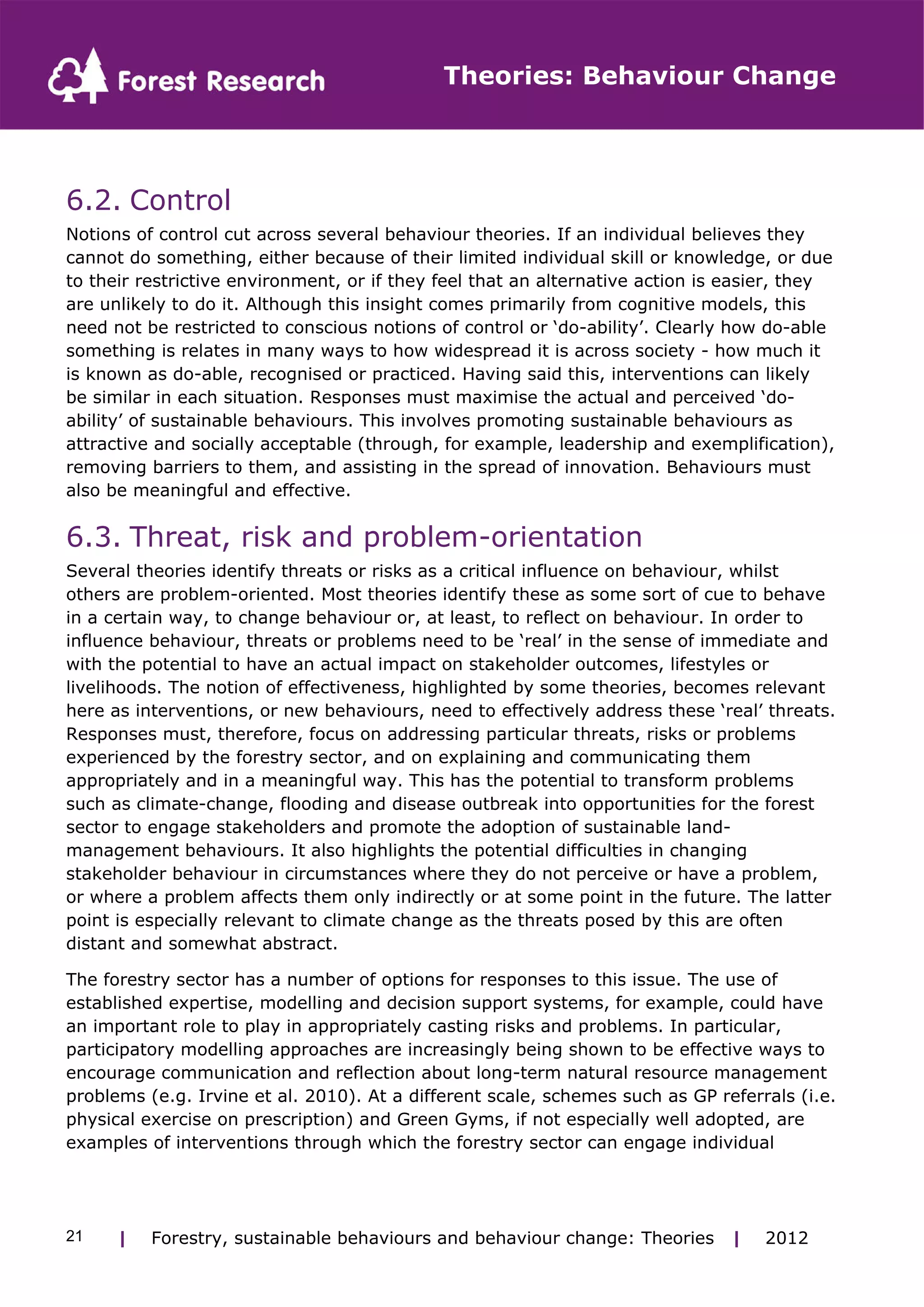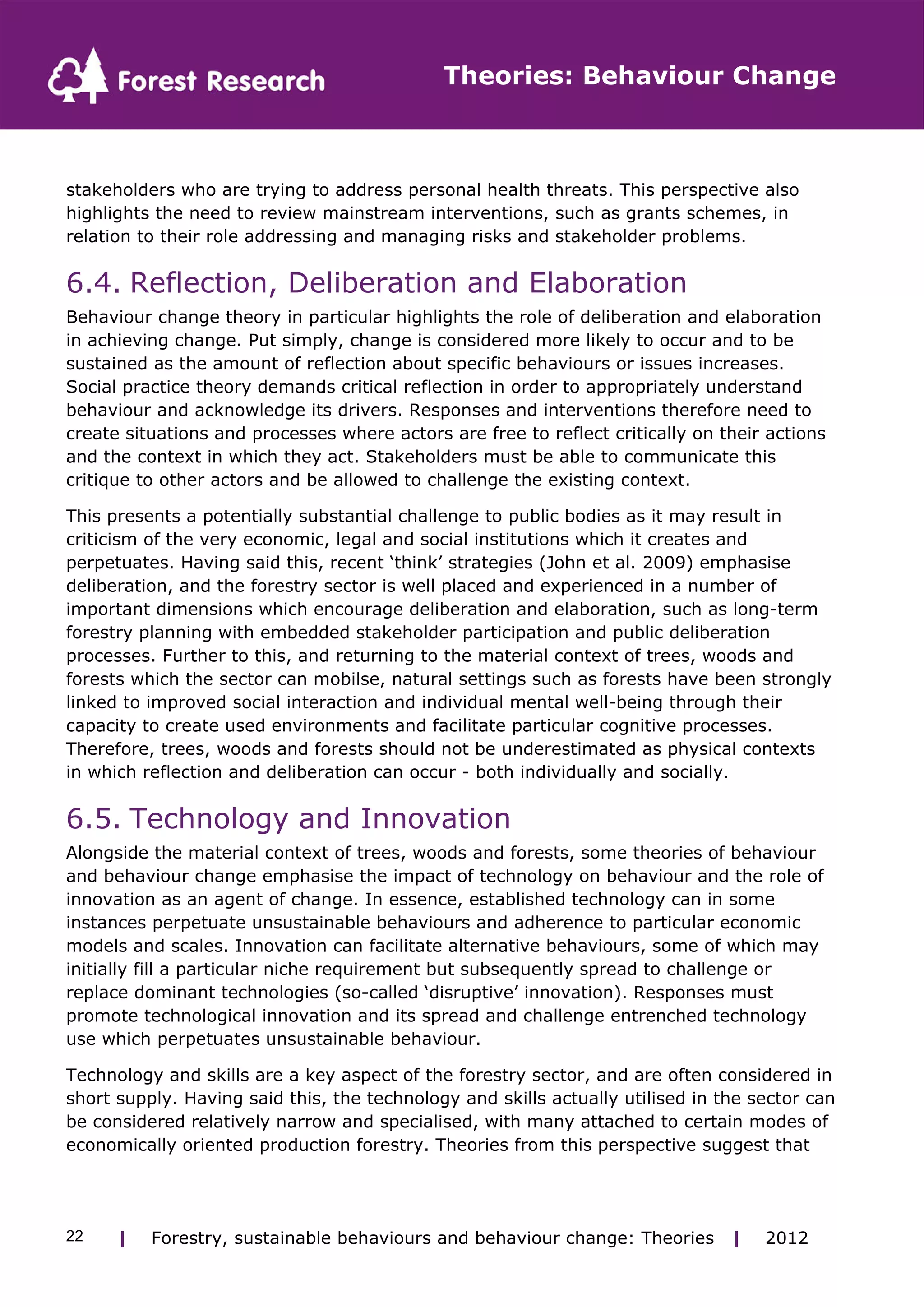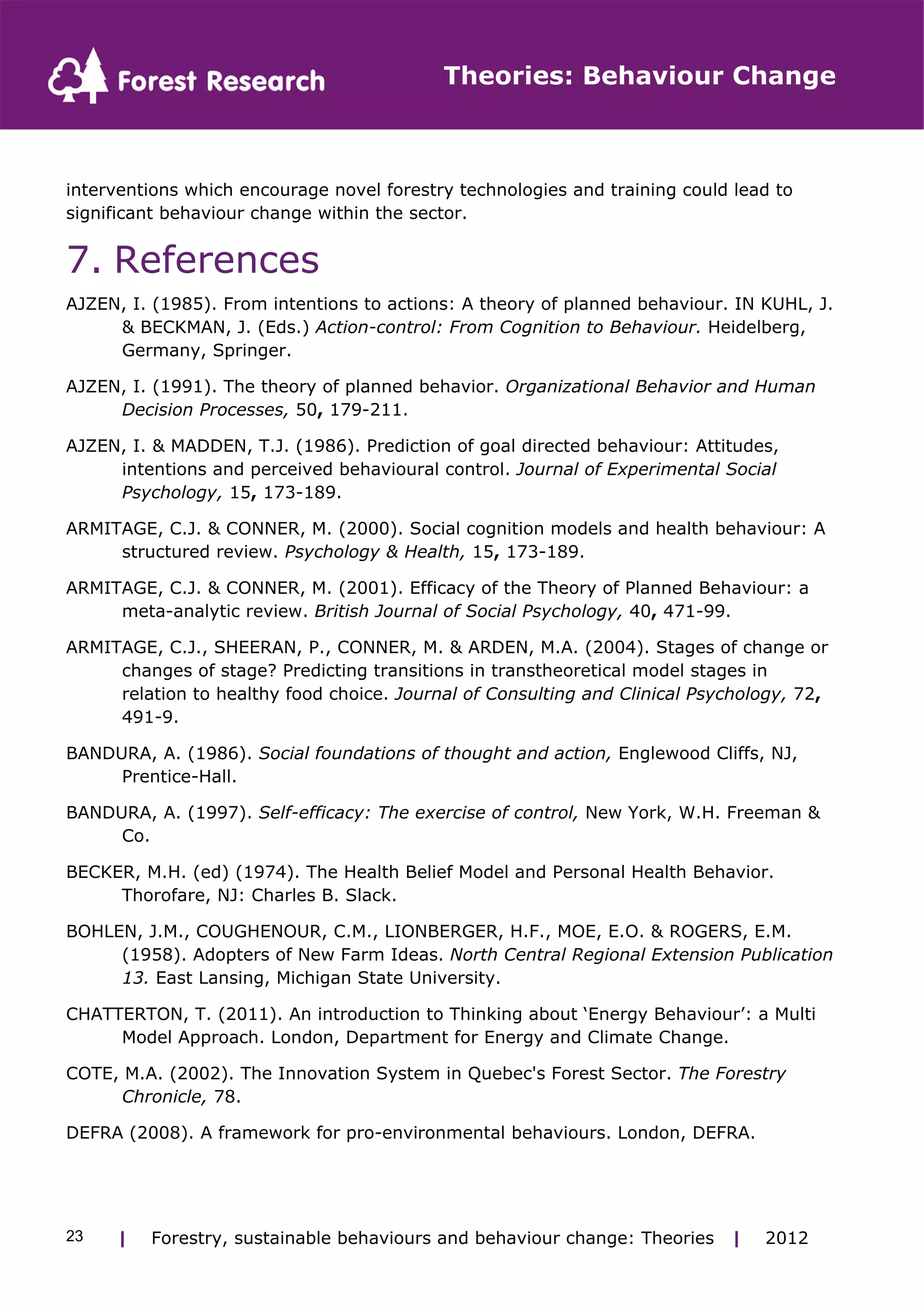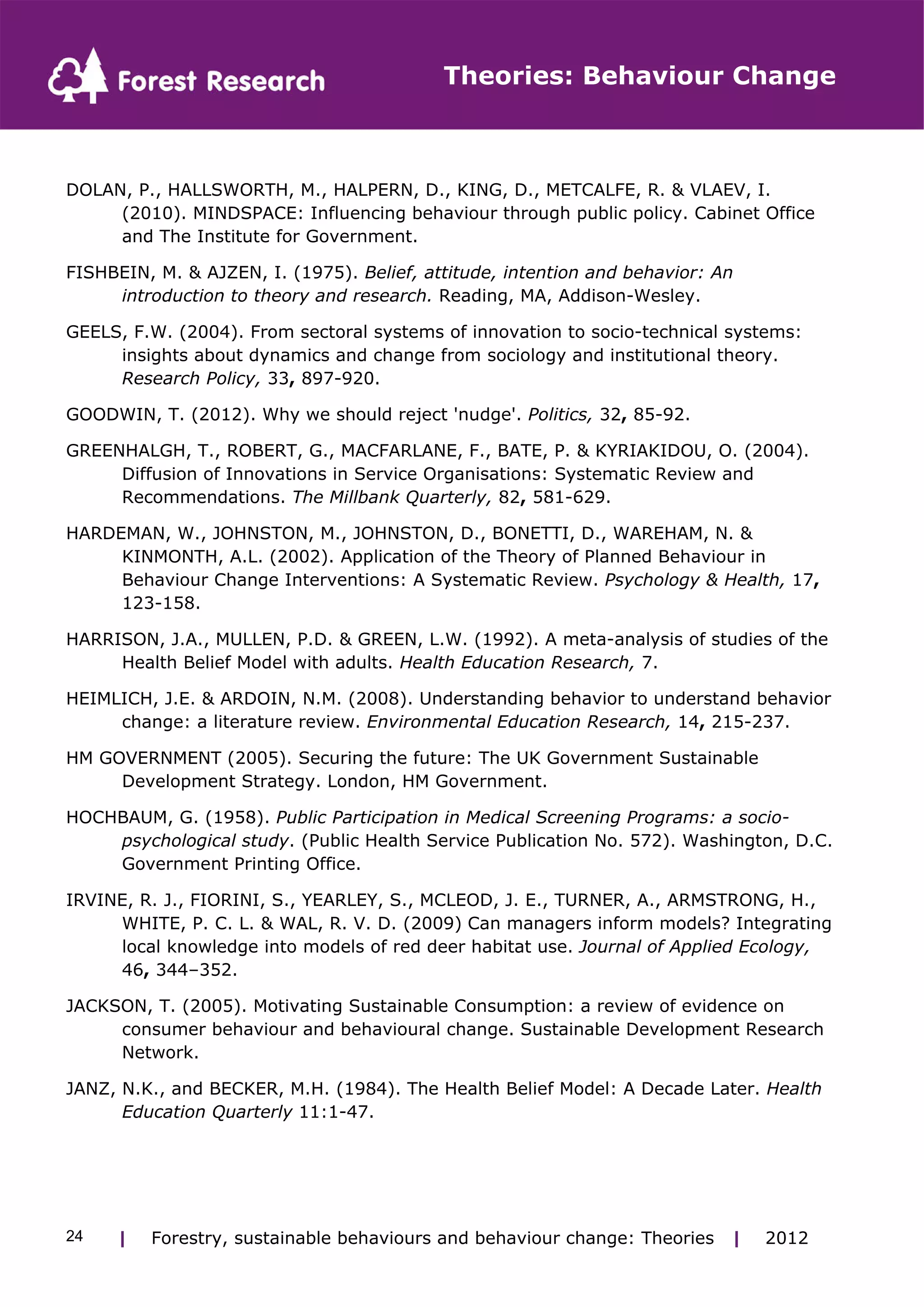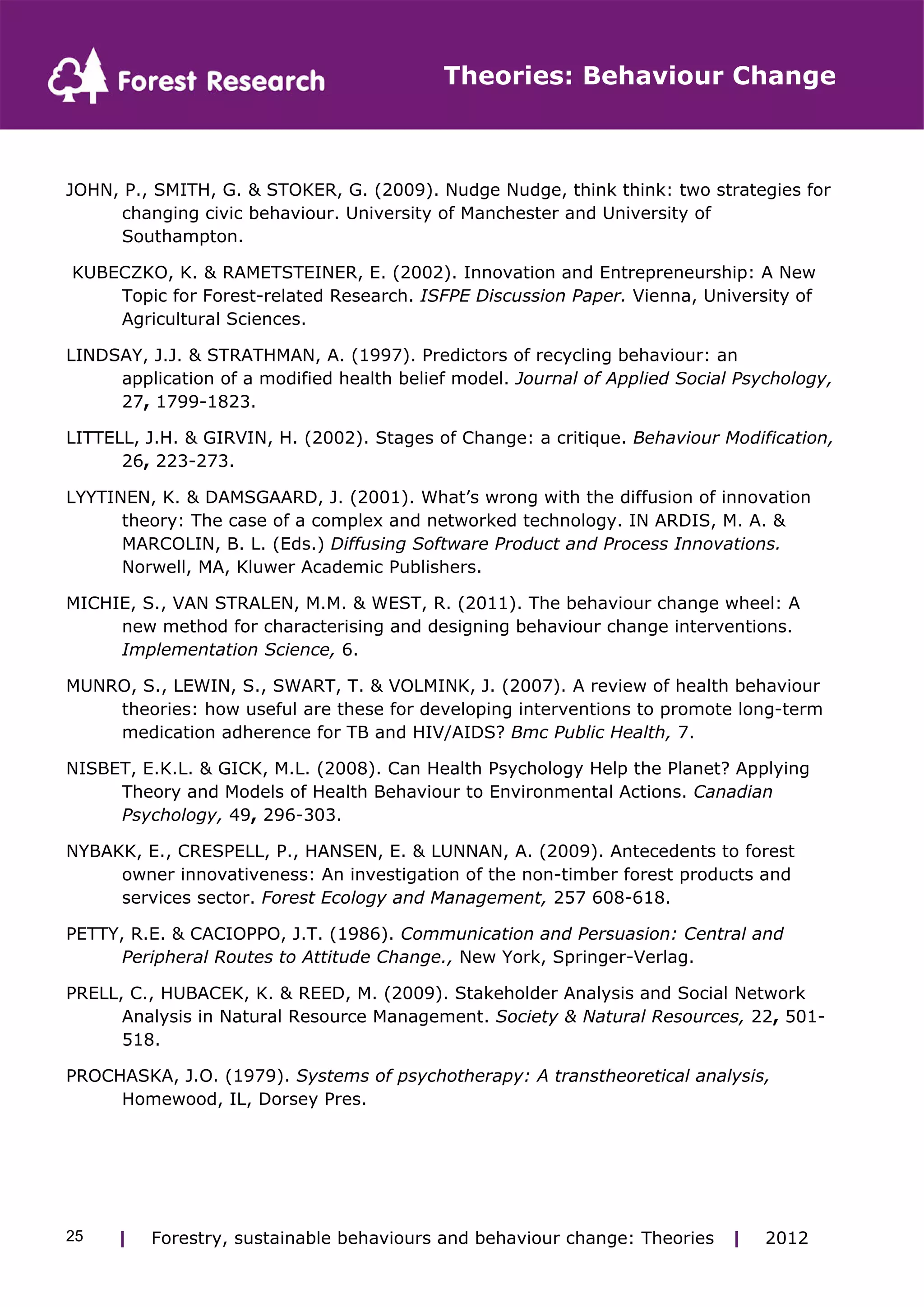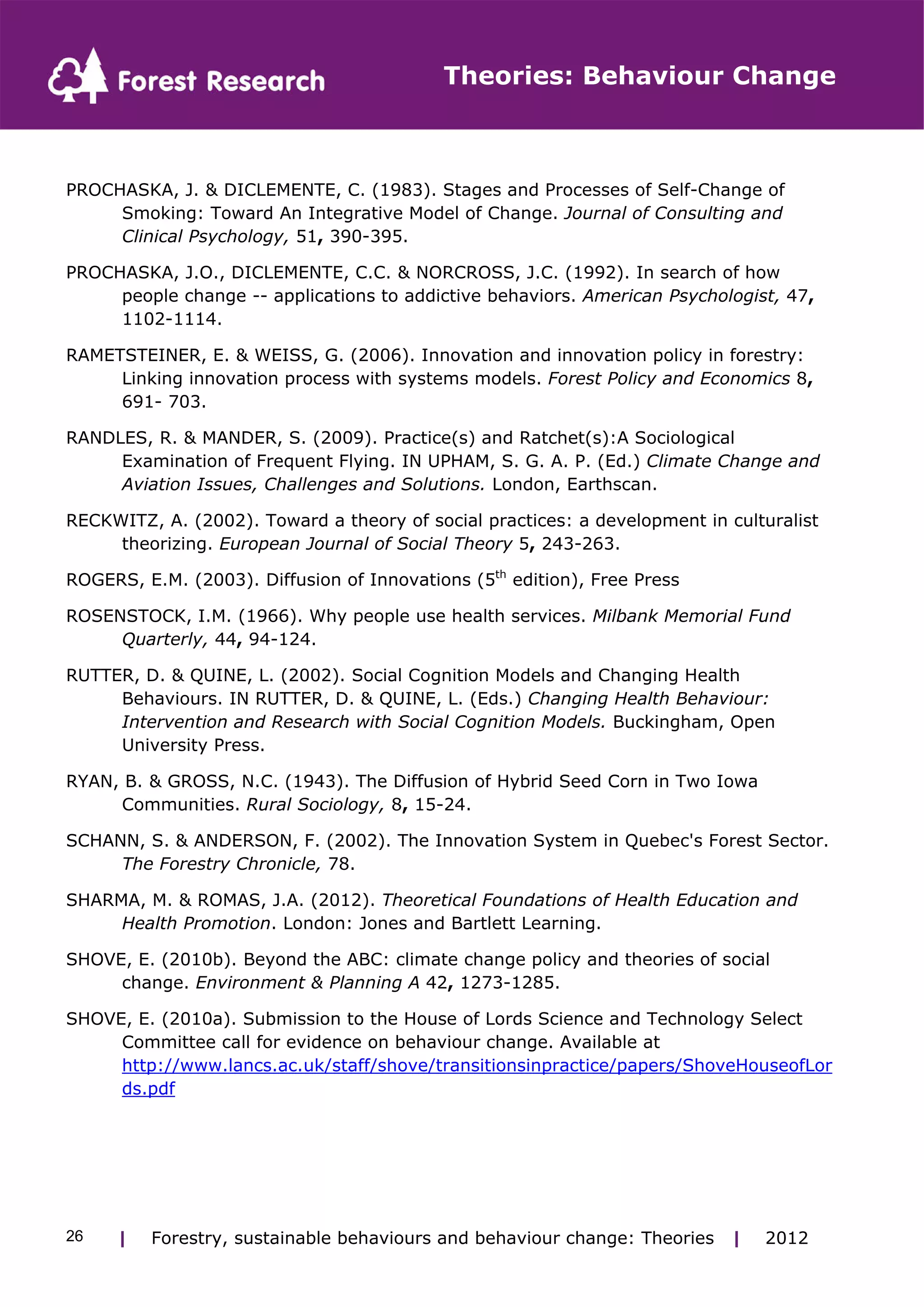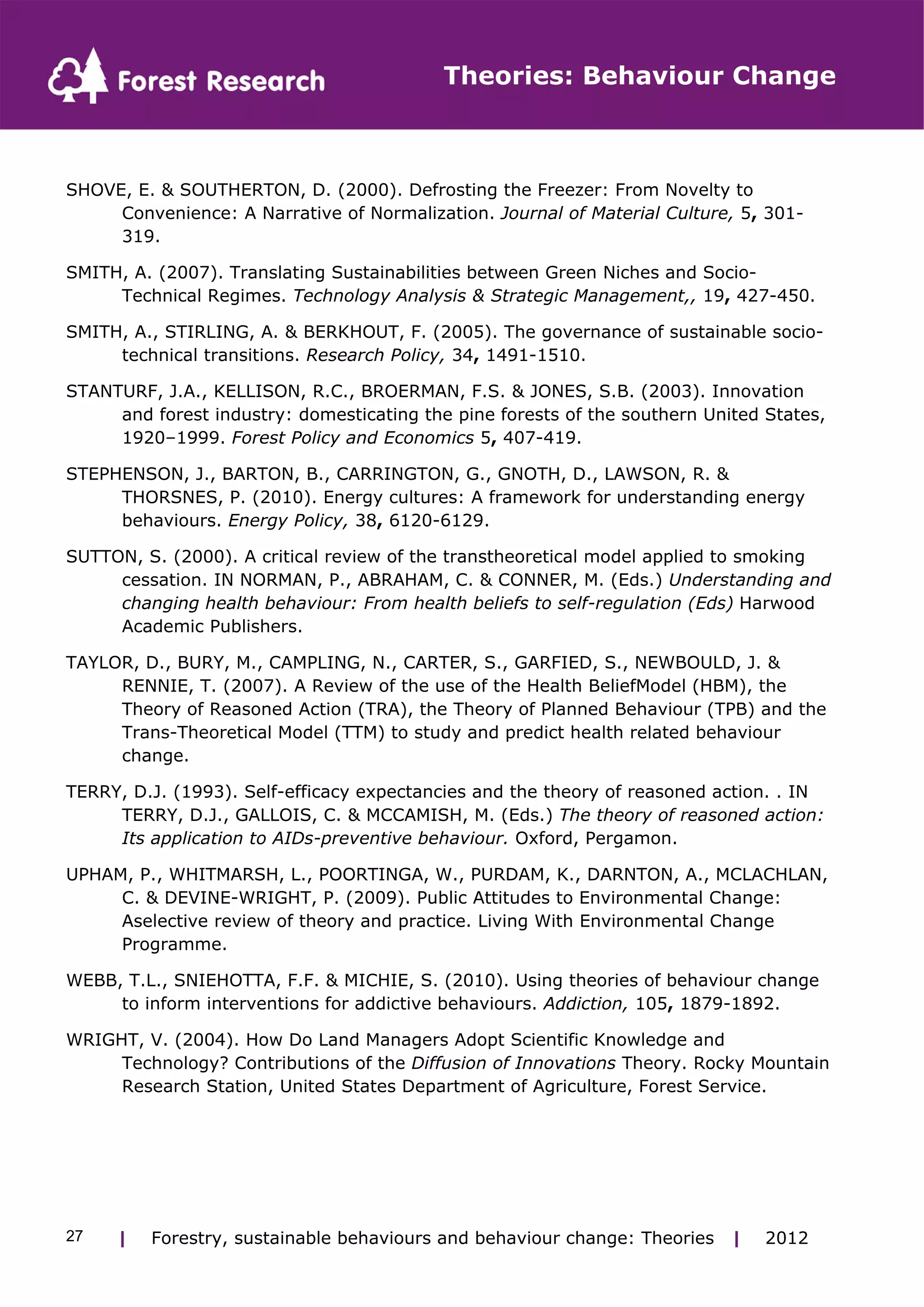This document reviews several theories and models of individual and social behavior and behavior change. It discusses theories focused on individual cognitive factors like the Theory of Planned Behavior and Health Belief Model. It also examines stage-based models like the Stages of Change Model. Finally, it explores social and technological perspectives like Social Practice Theory and Diffusion of Innovation Theory. The review identifies common themes across theories like consideration of individual and social influences as well as concepts of control, risk, reflection, and technology.
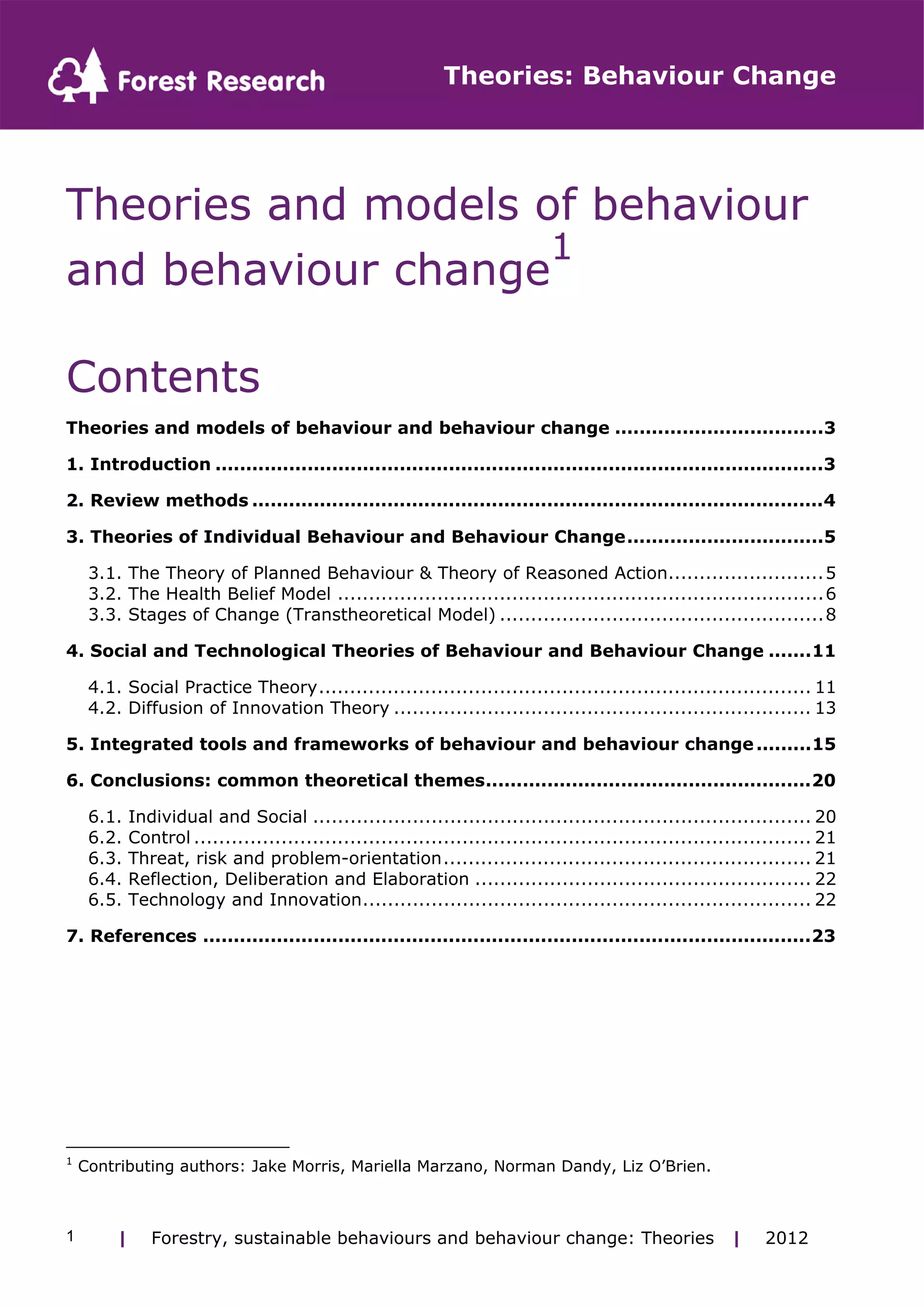
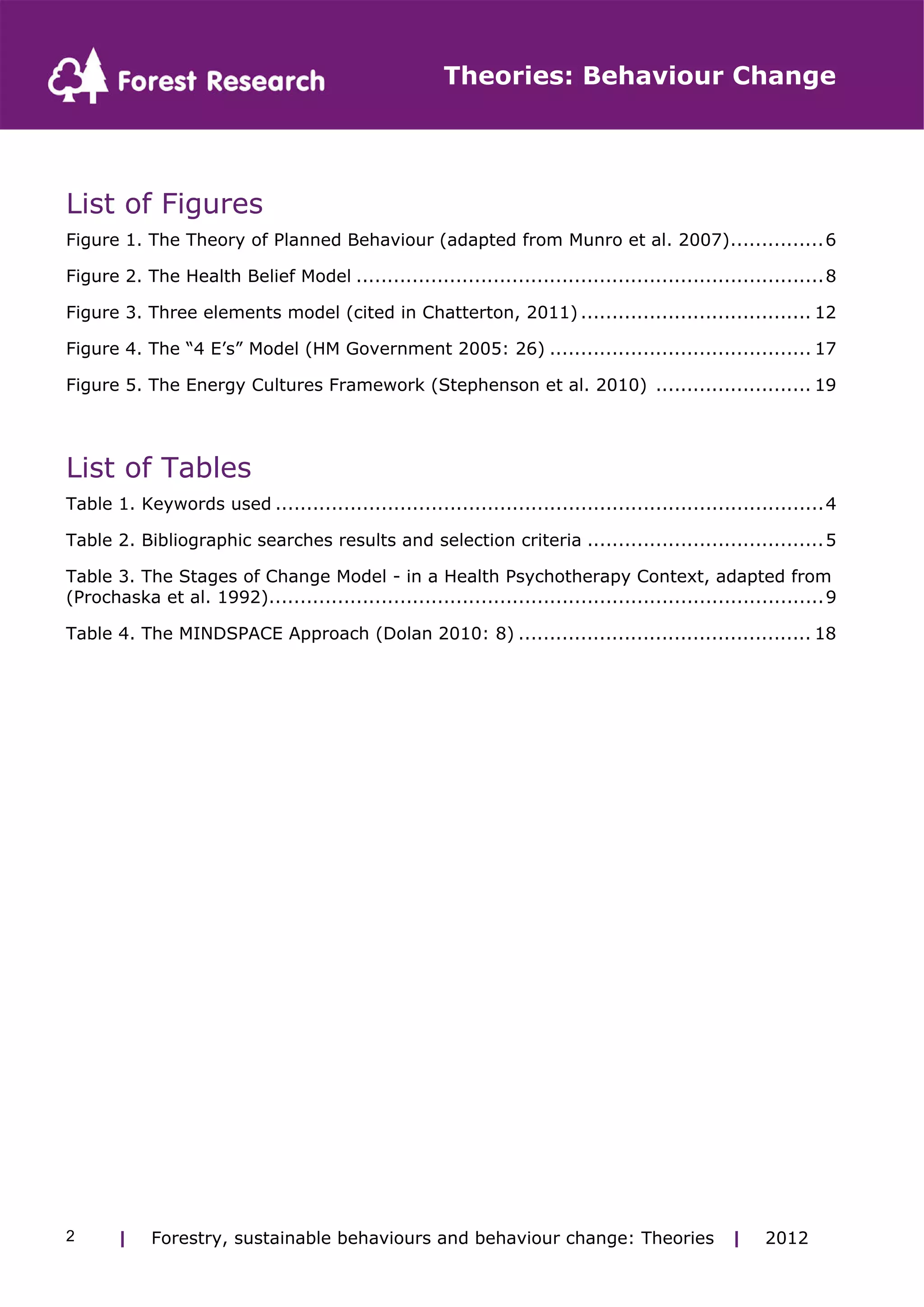

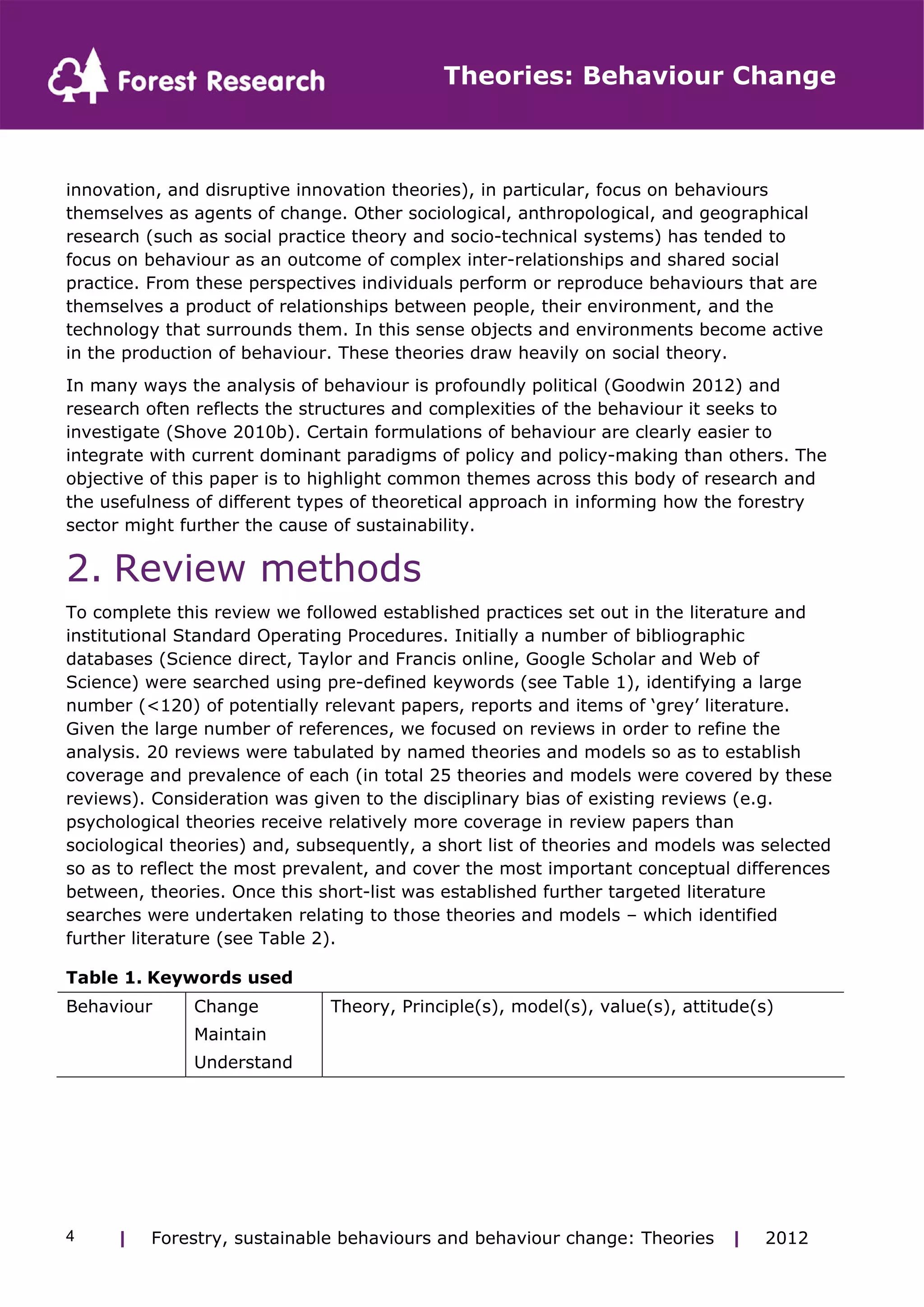

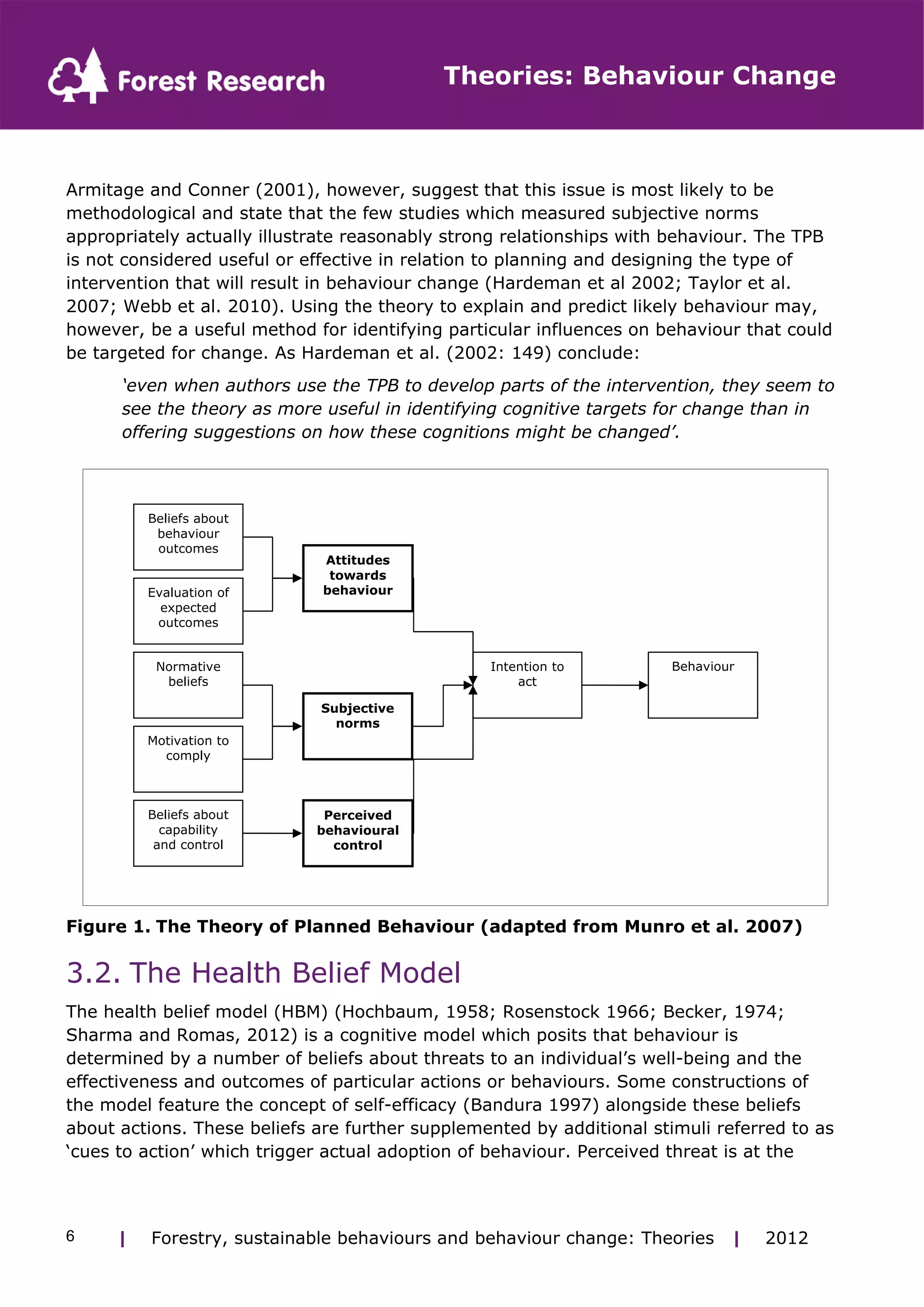
![Theories: Behaviour Change
core of the HBM as it is linked to a person’s ‘readiness’ to take action. It consists of two
sets of beliefs about an individual’s perceived susceptibility or vulnerability to a particular
threat and the seriousness of the expected consequences that may result from it. The
perceived benefits associated with a behaviour, that is its likely effectiveness in reducing
the threat, are weighed against the perceived costs of and negative consequences that
may result from it (perceived barriers), such as the side effects of treatment, to
establish the overall extent to which a behaviour is beneficial. The individual’s perceived
capacity to adopt the behaviour (their self-efficacy) is a further key component of the
model. Finally, the HBM identifies two types of ‘cue to action’; internal, which in the
health context includes symptoms of ill health, and external, which includes media
campaigns or the receipt of other information. These cues affect the perception of threat
and can trigger or maintain behaviour. Nisbet and Gick (2008: 297) summarise the
model as follows:
‘in order for behaviour to change, people must feel personally vulnerable to a
health threat, view the possible consequences as severe, and see that taking
action is likely to either prevent or reduce the risk at an acceptable cost with few
barriers. In addition, a person must feel competent (have self-efficacy) to execute
and maintain the new behaviour. Some trigger, either internal ... or external ..., is
required to ensure actual behaviour ensues’.
Of course the opposite to much of this is also true. When an individual perceives a threat
as not serious or themselves as unsusceptible to it, they are unlikely to adopt mitigating
behaviours. Low benefits and high costs can have the same impact. The main elements
of the HBM are illustrated in Figure 2. There are a number of reviews and summaries of
the model available (Janz and Becker, 1984; Harrison et al 1992; Armitage & Conner
2000; see also Rutter and Quine 2002; Munro et al. 2007; Nisbet and Gick 2008; Webb
et al. 2010)
Although designed and developed in the healthcare context, the HBM has been applied
to the analysis of other types of behaviour, such as recycling (Lindsay and Strathman
1997), and is most suited to explaining or predicting patterns of behaviour. Formal
reviews have, however, concluded that it has generally weak predictive power,
suggesting it can predict only around 10% of behavioural variance (Harrison et al.
1992). Literature suggests that, of the HBM’s components, perceived barriers are the
most significant in determining behaviour (Janz and Becker 1984). The two established
criticisms of this model are that its components and rules about their inter-relationships
are not well defined, and (in common with other cognitive rational choice based models
focused on the individual) that it does not include social or economic or unconscious
(e.g. habitual) determinants of behaviour, which are generally considered to be at least
as important as the personal cognitive factors covered by the model. Jackson 2005:
133) clearly explains this latter problem:
‘this model [rational choice] is inadequate as a basis for understanding and
intervening in human behaviours for a number of reasons. In particular it pays
| Forestry, sustainable 7 behaviours and behaviour change: Theories | 2012](https://image.slidesharecdn.com/behaviourreviewtheory-140912051501-phpapp02/75/Behaviour-review-theory-7-2048.jpg)
